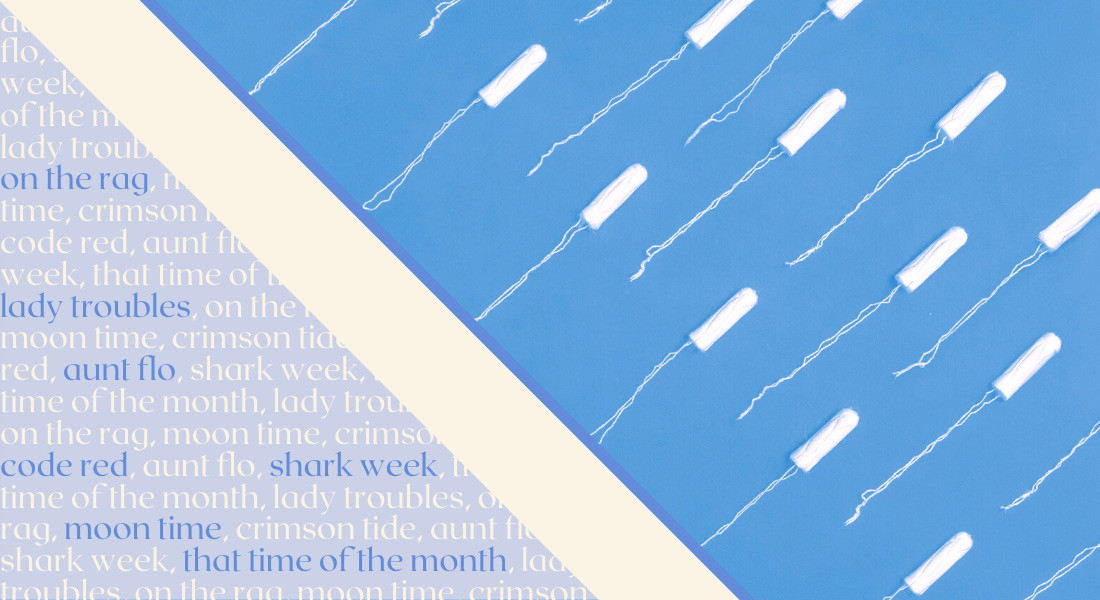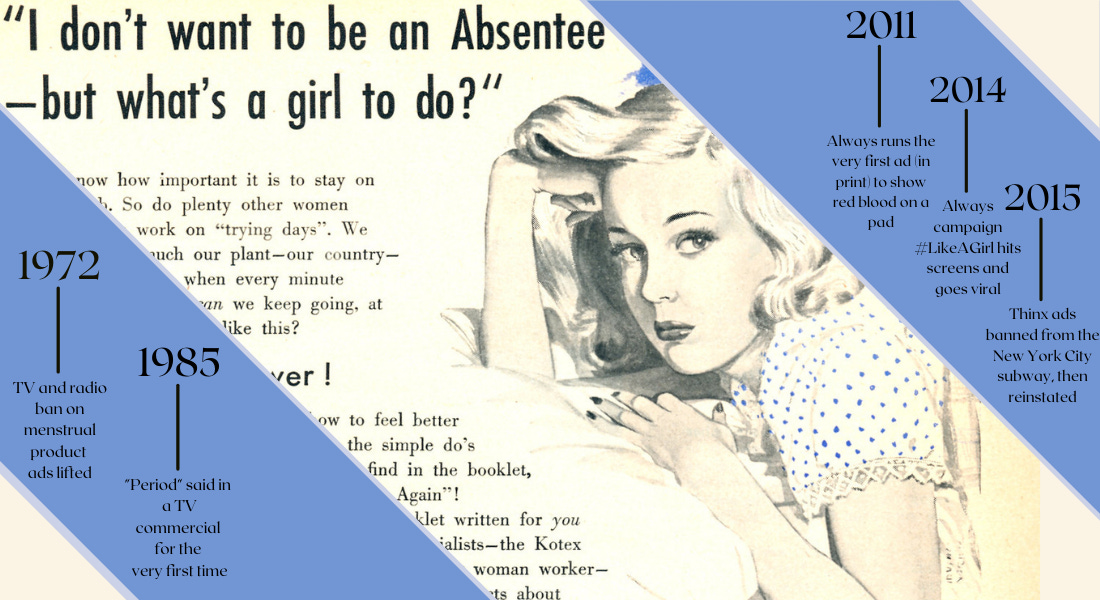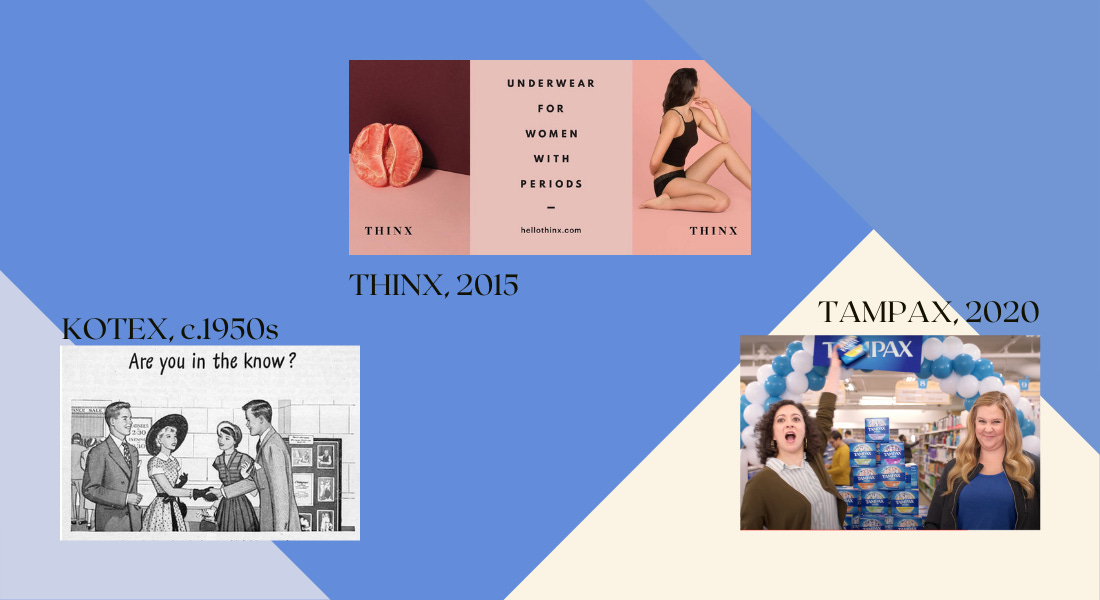How advertising is slowly changing period stigma
Advertisers are pushing realistic representations of menstruation just as hard as their products
Written by @KateMRedd, a journalist striving to have the confidence of this man
A 4 minute read
GUIDING QUESTION
As period-product marketing gets real, is the stigma around menstruation changing?

TEASER
Period marketing had humble beginnings. It was once a “dirty little secret” only alluded to in ad copy, but now these ads include people proclaiming real, period-related experiences, sometimes incredibly viscerally. You can’t deny it. Period-product marketing is changing—and with it, the conversations and comfort we have around periods.
It’s not a revelation that most people who get periods don’t exactly shout from the rooftops when that time of the month arrives. Periods, for the most part, are shrouded by euphemisms ranging from the subtle “that time of the month,” to the sexist “lady troubles,” to the slightly absurd “shark week.”
The stigma around menstruation seems to have started as early as menstruation did, and it reaches all corners of the world with different repercussions globally like in the cultures where a period may still mandate solitary confinement.
But of course, people who get periods tend to need a few supplies, with pads and tampons being the most commonly used and widely available (at least in areas where period poverty isn’t a problem—but hold on, we’ll get there). So, despite all the secrecy and stigma, advertisers saw an audience with money to spend and stepped in.
And thus the “period ad” was born!
The phrase “period ad” conjures up images of thin ladies twirling in white dresses and hurtling down waterslides. That, or there’s the blue liquid being poured onto pads to show how you’ll completely forget you’re on your period when wearing one!
But mainstream period-product marketing hasn’t always been so… real.
The Lily’s article on stigma has some phenomenal examples of the strangely cryptic 1950s Kotex ads suggesting their products for use “on certain days” for women “in the know.” Advertising menstrual products on television or the radio wasn’t even allowed until 1972, and even then, the word “period” wouldn’t be mentioned in a TV commercial until 1985.

But now, major brands like Always and Tampax aren’t pretending that periods don’t exist anymore.
In fact, they’re embracing them.
Alternative period products have been making bold ads for a few years now. Flex, a menstrual disc, isn’t afraid to put it all out there. And Thinx, the reusable period-underwear startup, had its ads banned from the New York subway for featuring fruit that looked, well, too much like a real body. The ads were later greenlit by Outfront Media, which runs the advertising seen in the New York City subway, presumably due to backlash and the response from former Thinx CEO Miki Agrawal as reported on by Refinery29.
In 2014, Always went viral with their #LikeAGirl campaign, which showed little girls who hadn’t yet learned that to do something “like a girl” is a phrase most often used in a derogatory way.
Now, there’s Amy Schumer, conducting interviews about period myths and proudly confronting period shame and experiences that feel familiar to period-having folks everywhere. And then there’s this ad campaign, which hits on a specific (and visceral) moment that happens once a month.
Now, let’s be clear—this is good.
It’s good for little girls to know that being female doesn’t make them less than!
It’s good for women and people with vaginas of all ages to talk about their bodies using biologically correct terms rather than mysterious euphemisms.
It’s good for periods to be seen as a normal part of society, and for period-product commercials to talk about the real experiences that people with periods have, not just the products that allow them to ignore their periods entirely.
But it’s also good marketing.
The point of feel-good commercials, at the end of the day, is to sell products.
Brands like Always have a national platform backed by the advertising dollars of parent companies like Procter & Gamble. Making a statement like the #LikeAGirl campaign puts the idea onto the national stage, and it encourages supporters to spend their period-product dollars on Always products. Even edgy commercials like Flex’s are designed to capture as many word-of-mouth consumers as possible.
But as commercials get more real, other countries around the world, like Scotland, are pushing to make period products free. Commercials and advertisements make the realities of menstruation more visible, but in the United States, accessibility of period products remains an issue.
On a federal level, the CARES Act passed in March 2020 included an expansion of “qualified medical expenses” to include menstrual products. But period poverty, which occurs when people who menstruate don’t have adequate access to period products, continues to persist. What’s more, it simply compounds the effects of a global pandemic.
So is the stigma around menstruation fading?
The conversations are certainly getting more real, and the fact that there are conversations at all is a good sign.
But visibility must come hand in hand with accessibility. If people can’t access these products because they can’t afford or access them, like in prisons and within homeless populations, then marketing won’t resonate enough to combat period stigma effectively. Without affordable feminine hygiene, we might still be in our antiquated, pretty-white-dress phase.
WHAT WE DON’T HAVE ANSWERS TO
The statistics.
We’re not statisticians (it would be a lot cooler if we were, though). Bringing data to this story helps put the whole thing into perspective. Look at the revenue versus ad spend of Tampax and Kotex against Thinx and DivaCup over time. Is someone aggressively pushing for more attention?
The global angle.
If we had the capability to look internationally for this pitch, we absolutely would, but we’ll leave that up to you. Finding international information about period products and period marketing is crucial to take this piece to the top level.
The other pieces of the period puzzle—namely, birth control.
This ad fits right into this pitch as a perfect case study, but it’s for birth control. That can be used as a period product, as many people use it to regulate or prevent their periods altogether. However, it’s a different angle and conversation to be had when it comes to period stigma and availability specifically.
PEOPLE WORTH INTERVIEWING
Someone from the Flex team (you can check out their full roster here) could speak to their ad strategy and their role as a disruptor in the conventional period product space.
Period.org, nonprofit combating period poverty. Specifically, Michela Bedard, the Executive Director, or Anusha Singh, the Campaign Manager, can speak about their work and research to combat period poverty and its underlying causes.
WE’LL SEE YOU ON THE WIRE
Want another pitch in time for your next meeting?
Know someone who’d love this pitch?
Publishing this story? See a correction? Got a tip? Tell us and we’ll publish it!
ADDITIONAL SOURCES
Why we’re taught to hide our periods
Period products: What are the options?
This Is The Actual Reason Pad Commercials Use That Weird Blue Liquid
Great Moments in Menstrual History
Are These Ads Too Controversial For The NYC Subway?
THINX Ads Are On The Subway — But That's Not All
Feminism in advertising: irony or revolution? A critical review of femvertising
1 in 10 college women face period poverty, a study shows. Here’s what that means.
Period Poverty Is Getting Worse During The Pandemic





